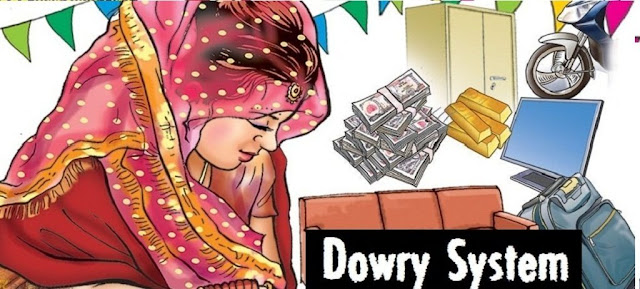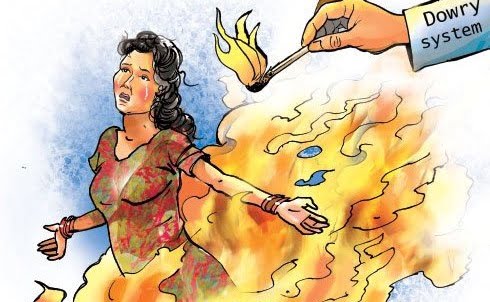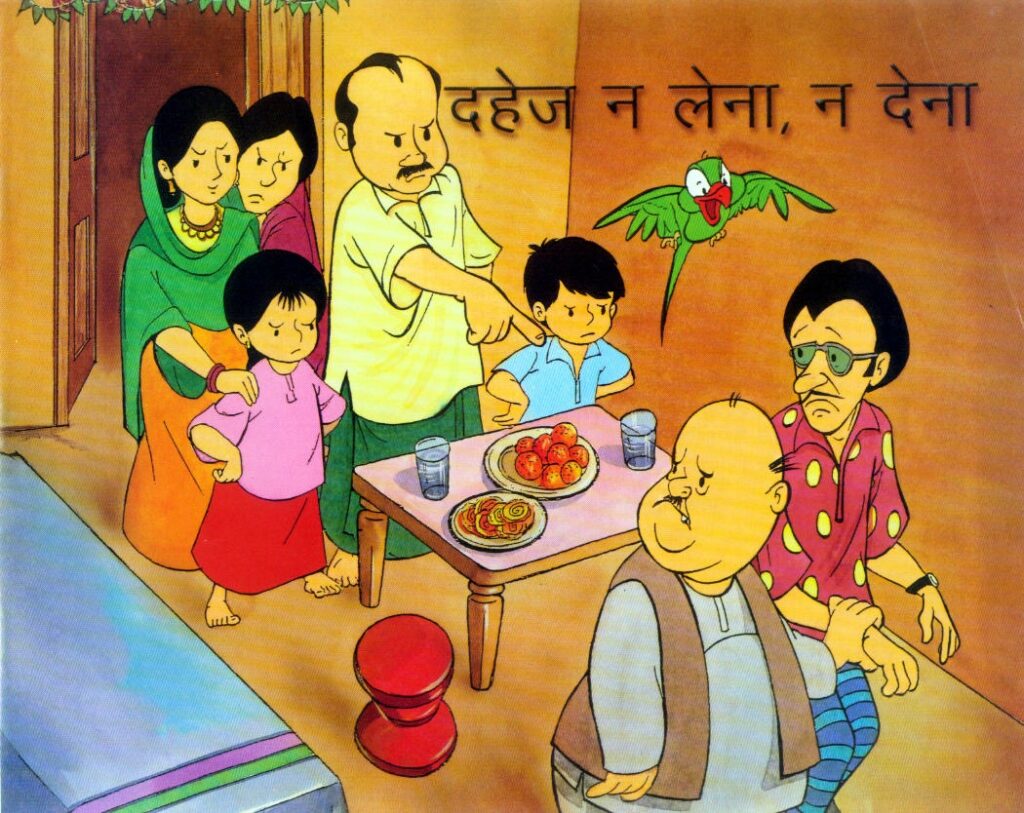Dowry System Essay in English in 500 words Dowry System Paragraph

Title: The Dowry System: A Harmful Practice Rooted in Patriarchy
The dowry system, a deeply ingrained social practice in many parts of the world, particularly in South Asia, involves the transfer of wealth, property, or other valuables from the bride’s family to the groom’s family at the time of marriage. While often portrayed as a cultural tradition, the dowry system is a deeply problematic practice that perpetuates gender inequality, fuels violence against women, and reinforces patriarchal norms.
The origins of the dowry system can be traced back to ancient times, where it was seen as a way to secure a woman’s financial stability and ensure her well-being in her new household. However, over time, the practice has evolved into a form of social stratification, where the amount of dowry given reflects the family’s social status and wealth. This has led to a commodification of women, where their worth is determined by the material possessions they bring into the marriage.
The consequences of the dowry system are far-reaching and devastating. It has been linked to a rise in female infanticide, as families fear the financial burden of raising daughters. Girls are often deprived of education and opportunities to pursue their own aspirations, as their primary focus is on securing a wealthy husband. Moreover, the dowry system perpetuates a cycle of debt, as families take on loans to meet the exorbitant demands of the groom’s family. This often leads to poverty and destitution, particularly for families from lower socioeconomic backgrounds.
The dowry system also fuels violence against women. Brides who fail to bring in the expected dowry are often subjected to physical and emotional abuse, harassment, and even death. The practice has been linked to a rise in bride burning cases, where women are doused with kerosene and set on fire by their in-laws. These horrific incidents highlight the extreme brutality that women face under the dowry system.
In recent years, there have been efforts to address the dowry system through legal and social reforms. Several countries have enacted laws prohibiting dowry transactions, and there have been campaigns to raise awareness about the harmful effects of the practice. However, the dowry system remains deeply entrenched in many societies, and it will take sustained efforts to eradicate it completely.
To combat the dowry system, we must challenge the patriarchal norms that underpin it. We need to promote gender equality and empower women to make their own choices about their lives and marriages. We must also address the underlying economic factors that drive the practice, such as poverty and lack of education. By working together, we can create a society where women are valued for their own worth, not for the material possessions they bring into a marriage.

Dowry System Essay in English in 300 words
The Dowry System: A Societal Ill that Needs to Be Eradicated Introduction
The dowry system, a deeply entrenched social practice in many parts of the world, is a pernicious custom that places an undue burden on women and their families. This harmful tradition involves the transfer of wealth, property, or other valuables from the bride’s family to the groom’s family as a precondition for marriage. Rooted in patriarchal norms and discriminatory gender roles, the dowry system perpetuates gender inequality and often leads to a multitude of negative consequences for women, including violence, exploitation, and even death.
The Societal Impact of Dowry
The dowry system has far-reaching societal implications, exacerbating social, economic, and gender disparities. It reinforces the notion of women as possessions to be exchanged for material gain, perpetuating their subordinate status in society. This practice also fuels female foeticide and infanticide, as families often view daughters as an economic liability. The burden of fulfilling dowry demands can drive families into poverty, leading to increased debt, financial strain, and social marginalization.
The Economic Burden of Dowry
The economic implications of the dowry system are particularly severe in developing countries where poverty is prevalent. The exorbitant costs associated with dowry payments can trap families in a cycle of debt, hindering their ability to meet basic needs such as food, shelter, and education. This financial strain often forces families to sell assets, take on loans, or even resort to illegal means to fulfill dowry demands, exacerbating their economic vulnerability.
The Psychological Impact of Dowry
The dowry system not only imposes a financial burden but also takes a heavy psychological toll on women. The societal pressure to provide a substantial dowry can lead to feelings of shame, guilt, and anxiety among women and their families. The fear of not being able to meet dowry demands can contribute to stress, depression, and even suicide. Moreover, women who are unable to fulfill dowry expectations often face discrimination, abuse, and violence within their marital homes.
Efforts to Eradicate Dowry
Despite its harmful effects, the dowry system persists in many societies due to entrenched social norms and a lack of awareness of its negative consequences. Governments and civil society organizations have made efforts to address this issue through legislation, education, and awareness campaigns. However, the deeply ingrained nature of the dowry system makes it a challenging problem to eradicate.
Conclusion
The dowry system is a deeply entrenched social ill that perpetuates gender inequality, economic hardship, and psychological harm. It is a practice that needs to be eradicated through concerted efforts at the individual, community, and societal levels. Education, awareness-raising campaigns, and stricter enforcement of anti-dowry laws are essential steps in combating this harmful tradition. By promoting gender equality, empowering women, and addressing the root causes of the dowry system, we can create a more just and equitable society for all.

Dowry System Essay
The Dowry System: A Persistent Evil in India
The dowry system is a deeply ingrained social practice in India, where the bride’s family is expected to pay a substantial sum of money, property, or other valuables to the groom’s family at the time of marriage. This archaic tradition has been rooted in Indian society for centuries, perpetuating gender inequality, fueling female infanticide, and perpetuating a cycle of violence against women.
The origins of the dowry system can be traced back to ancient India, where it was considered a voluntary gift from the bride’s family to the groom’s family to ensure the bride’s well-being and security in her new home. However, over time, this voluntary practice transformed into a mandatory demand, becoming a burden on families, particularly those from lower socioeconomic backgrounds.
The consequences of the dowry system are far-reaching and devastating. It has led to the commodification of women, reducing them to mere possessions to be traded in exchange for material wealth. This has fueled female infanticide, as families, fearing the financial burden of dowry, opt to kill their daughters rather than raise them to adulthood.
The dowry system has also contributed to a rise in domestic violence against women. Brides who fail to bring in the expected dowry are often subjected to physical, emotional, and psychological abuse by their in-laws and husbands. The fear of violence and social ostracization often prevents women from speaking out against dowry demands or seeking legal recourse.
Despite being outlawed in India in 1961, the dowry system persists due to deeply ingrained societal norms and the lack of strict enforcement of the law. The practice is prevalent across all social classes, but it is particularly acute in rural areas and among lower socioeconomic groups.
Combating the dowry system requires a multi-pronged approach that addresses both the legal and societal aspects of the issue. Strengthening and enforcing anti-dowry laws is crucial to deterring the practice and providing legal protection for victims. However, legal measures alone are not sufficient.
Changing societal attitudes and perceptions of women is essential to dismantling the dowry system. Education and awareness campaigns play a vital role in empowering women and challenging traditional gender norms. Promoting women’s financial independence and encouraging female education can also help reduce the economic burden associated with dowry.
The dowry system is a deep-rooted social evil that continues to inflict immense suffering on women and their families. By addressing both the legal and societal aspects of the issue, India can work towards eradicating this harmful practice and creating a more just and equitable society for all.

for more essay check the below mentioned linkshttps://stationvidya.com/the-importance-of-mental-health-in-500-words/
for more essay you can visit our site. if you like essay please do like and comment on which topic you need a blog to be posted.
Thank you
Leave a Reply